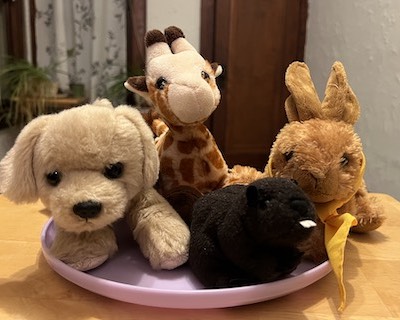When Rohan was five years old, he was outside playing with a friend, and a man walked through the alley. Rohan’s friend pointed at the man in the alley and said that the man was a kidnapper. Rohan ran into the house to find his mom. His mom assured him that he was safe, but Rohan was different from that day forward. Even when Rohan moved from India to the United States the following year, a paralyzing fear of being abducted traveled with him.
Rohan’s fear became most active at night. After developing his fear of being kidnapped, Rohan would only sleep in his mom’s room at night, and he was tormented by thoughts of people breaking in and taking him away. Four years after the alley incident, nine-year-old Rohan was still sleeping in his mom’s room with terrifying nighttime fears. It was this challenge as well as behavioral problems at school that prompted the family to start to see me for private sessions.
I am a resilience educator, not a therapist. So when Rohan and his mother began private sessions with me, I let them know that I would be teaching them resilience tools that could eventually be applied to any of Rohan’s challenges, including his nighttime obsessions. I was in touch with the school counselor at Rohan’s school, and I let his counselor know the resilience habits that Rohan was developing.
I used the playful animals and lessons from the Mindfulness and Self-Compassion Workbooks for Kids to help Rohan learn resilience skills. When Rohan took the feelings habit animal quiz, he identified with the beaver feelings habit. As he gained mindfulness skills, Rohan learned the distinction between being a beaver (thinking he was his thoughts) and observing his beaver-like thoughts.
Over the weeks and months of our sessions, Rohan began acquiring the skills of the resilience habit animals. He refined his ability to “Spot” his feelings, and he learned to assure himself that he was not alone when he struggled (the “Buddy” habit). Rohan also learned to observe his body sensations and identify things that he found soothing when he felt afraid. We talked about his obsessions, and how he could be kind to himself when he was feeling worried (the Snuggles habit).

We applied the “share the plate” metaphor to Rohan’s beaver thoughts. Rohan learned that he could observe his beaver brain, and also share the “plate” of his awareness with other thoughts, sensory experiences and resilience habits.
Although we would regularly check in about Rohan’s nighttime obsessions and discuss how the resilience habits could be applied to his nighttime fear of abduction, Rohan did not feel ready to apply the habits at night. It can be incredibly challenging to practice resilience habits in the face of pathological fears, so we instead practiced applying mindfulness and self-compassion-related skills to smaller challenges.
Rohan had a huge collection of team jerseys. He would get one jersey, and then he would begin to obsess about the next jersey he wanted to get. I tried to help Rohan be an observer of the habits of his mind. At one point, he also wanted an Apple watch, and he would think about the Apple watch throughout the day at school. Rohan decided to call these kinds of thoughts “sticker thoughts,” and he learned to apply resilience habits to these thoughts.
When Rohan’s brain starting obsessing about the Apple watch, Rohan developed these strategies using the resilience habit animals:
- Spots’ mindfulness: “Oh, look, it’s a sticker thought.”
- The Buddy habit: “It’s okay to have a sticker thought.”
- Comforting Snuggles: “I understand.”
- Super Snuggles: “C’mon, you can do this!”
- Doodles, “Think of pancakes (his favorite food), and make the sign language sign for pancakes.”
I helped Rohan to understand that resilience habits wouldn’t make the “sticker thoughts” go away, but they would instead help him cope effectively with the sticky thoughts. Rohan later told me that they were not sticker thoughts, but rather they were Duck tape thoughts! Even his sense of humor was a sign that he was learning a more healthy relationship with his thinking.
I’ll finish this story and share the events that led to Rohan’s miraculous recovery from his nighttime fears in my next blog.
Even though this story has a spectacular ending, it was all of the resilience tools that Rohan had gained that created the foundation for the big change that was to come.
Wishing you light, love, and resilience habits,
Jamie Lynn
Note: *Rohan’s name and some other identifying details have been changed to protect his privacy, but the details of his fears and recovery are true.
P.S. I have a couple of openings for private clients over the summer. If you are interested in helping your child (or yourself) grow resilience habits, you can fill out a private session waitlist form here or join one of my upcoming classes.

Trackbacks/Pingbacks